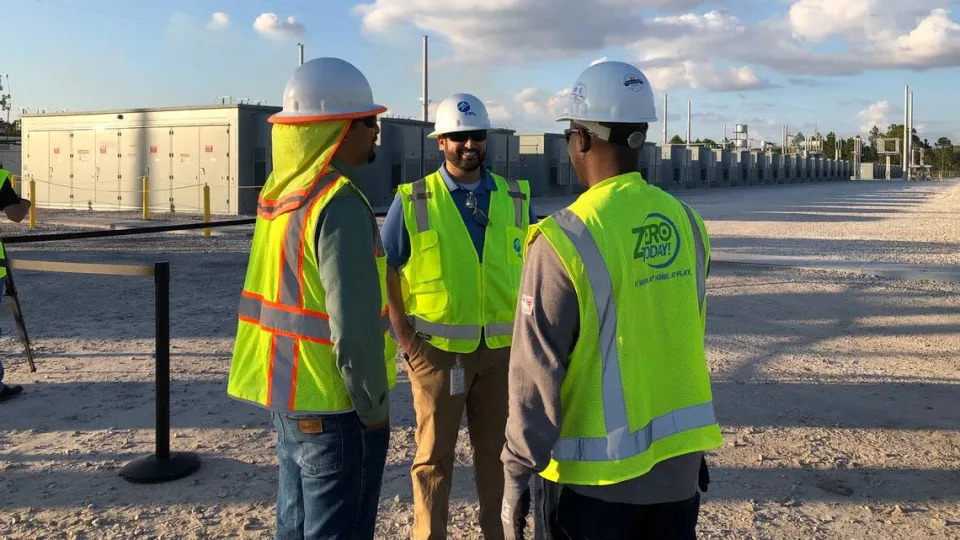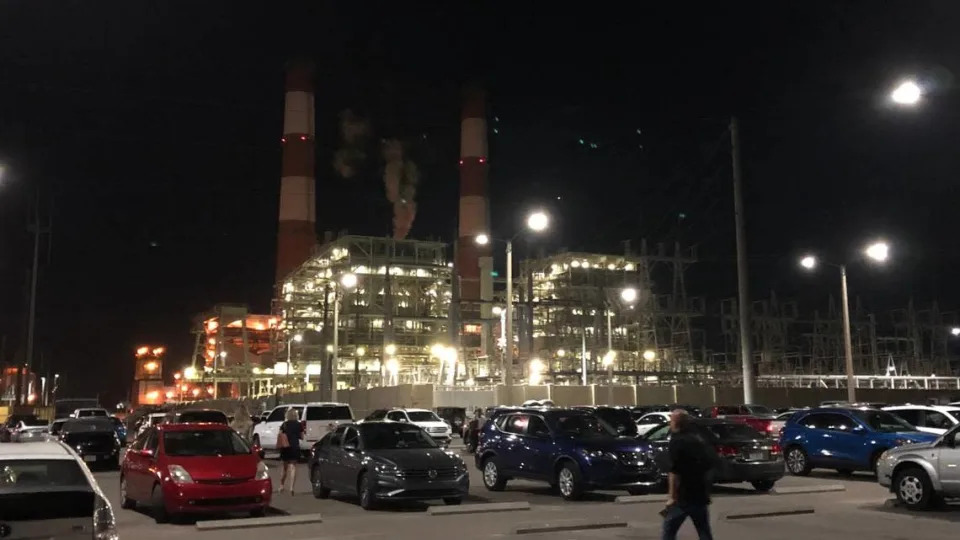World’s largest solar-powered battery unveiled at FPL’s Parrish plant with light show
James A. Jones Jr.
Tue, December 14, 2021, 9:29 AM
Solar panels only put power into the electric grid so long as the sun shines. It’s a classic case of use it or lose it.
Unless, that is, those solar panels are at the Manatee Solar Energy Center in Parrish, which is home to the world’s largest solar-powered battery.
Monday night, FPL showed what a battery that occupies 40 acres of land — roughly 30 football fields — can do. After the sun set, FPL put on a spectacular light and sound show with lasers stabbing into the night sky and synchronized lighted drones maneuvering into the outline of Florida, the FPL corporate emblem, and more.
Powering the show was solar energy stored in the massive battery — actually 132 battery containers, each with its own inverter to convert direct current into the alternating current used in homes and businesses.
It was FPL’s way of showing that solar power can be stored and then used when it is needed most — at night or during a cloudy day.
To put it in perspective, the huge battery can power approximately 329,000 homes for more than two hours. It has the same punch as 100 million iPhone batteries.
“It’s been a momentous year for clean energy in Florida. FPL opened the year by formally shutting down its last coal-fired plant in the state (in Indiantown) and now we’re closing the year by shattering a world record and commissioning the largest solar-powered battery in the world,” FPL president and CEO Eric Silagy said.
“Since embarking on the largest solar expansion in the nation, the company has also installed more than 13 million solar panels and is already 45% of the way toward reaching our ‘30-by-30’ goal to install 30 million solar panels across the state of Florida by 2030,” Silagy told an invited crowd of community leaders.
In addition to the Parrish solar plant, FPL has three other solar plants in Manatee County: at South Fork near Duette, Elder Branch and Willow, FPL spokesman Andrew Sutton said.
The familiar smokestacks of FPL’s natural gas-powered plant in Parrish still stand, but those stacks and the older plant it serves face decommissioning at some date in the future, Sutton said.
In fact, the gas-fired Parrish plant will be shut down Jan. 1, but likely will remain on stand by for a while, Sutton said.
Jimmy Patronis, Florida’s chief financial officer, was among those who attended Monday night’s unveiling and professed to being a technology nerd, and said the huge battery deserves a mention in Guinness World Records.
Carol Whitmore, at-large Manatee County commissioner, was also impressed by what the power of 409 megawatts can do.
“It’s the largest solar battery in the world. How cool is that?” Whitmore said.
FPL says its solar-powered battery is the world’s largest when measured by total output and capacity per hour.
When the sun’s rays are strongest, the battery system will store extra solar energy produced by the Manatee Solar Energy Center and feed that power to the grid when it’s needed most.
By deploying energy from the battery when there is a higher demand for electricity, FPL said it will offset the need to run other power plants, reducing emissions and saving customers money on fuel costs.
FPL commissioned the solar plant in Parrish in 2017, generating 74.5 megawatts of power, and making it, with power plants in Charlotte and DeSoto counties, the largest in the country when it opened.
Silagy, who also attended the 2017 commissioning, noted then that when President Barack Obama helped commission the DeSoto Next Generation Solar Energy Center in Arcadia in 2009, it was the largest in the country.
In 2017, each of FPL’s new solar energy centers generated 74.5 megawatts of power, enough to light up 15,000 homes. In contrast, the Arcadia plant generated 25 megawatts of power, enough to power 3,000 homes, a testimony to the continuing growth of solar energy in the United States.

12/13/2021--A spectacular sound and light show powered by a solar-powered battery wowed spectators Monday night at FPL’s solar energy plant in Parrish. The power for the night show was collected from the sun during the day and stored in battery, the world’s largest.

12/13/2021--FPL workers stand next to a solar-powered battery in Parrish that occupies space to equivalent to about 30 football fields.

11/13/2021--The days are numbered for FPL’s natural gas-powered electric generating plant in Parrish as more and more solar plants come on line.


